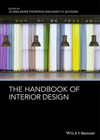Three Questions: Cynthia E. Smith, Curator of Socially Responsible Design at the Smithsonian Cooper-Hewitt, National Design Museum
 |
| Cynthia E. Smith |
Social-impact design isn't just about buildings or objects, as Cynthia E. Smith attests. Since 2009, Smith has served as the Smithsonian Cooper-Hewitt, National Design Museum's Curator for Socially Responsible Design, organizing exhibitions that address the burgeoning environmental, architectural, and sociological challenges brought on by earth's increasing population. RECORD caught up with Smith to find out what she thinks are the urgent issues and exciting developments in the field.
AS: How did you get involved in humanitarian work?
Cynthia Smith: Because I’ve been working on civil and human rights issues most of my adult life and was trained as a designer, I was looking for a way to combine these worlds. I headed to the Kennedy School at Harvard where I met others like me from 44 different countries and every profession. Inspired by the stories and work taking place in the local universities and schools, I returned to New York and began to gather socially responsible design projects from around the world to include in Cooper-Hewitt’s first exhibition dedicated to this type of design work, Design for the Other 90%, mounted in 2007.
AS: What’s the most pressing issue that architects and designers should be addressing?
CS: Today, for the first time in history, more of us are living in cities than ever before. It is critical we create more sustainable and inclusive cities. We can look to emerging and developing economies on how to create innovative solutions from limited resources and challenging environmental requirements. Whether you are a designer, architect, or planner working in your own city or on an international level, engaging and listening to members of a community about what they need is one of the most effective ways to improve urban regions.
AS: What’s the most exciting thing you’ve seen in the past month?
CS: It is hard to narrow the list. Here are a few things I found incredibly interesting this past month:
An engaged discussion at the Social Impact Design Summit convened by the National Endowment for the Arts, Lemelson Foundation, and Cooper-Hewitt to explore the gaps, challenges, and essential next steps to support designers and architects working in the growing area of social design. The forum asked, and brainstormed answers to, questions about successful and sustainable organizational models and how we can build systemic, sustainable support for current and future designers in the field.
'The Massachusettss Institute of Technology’s (MIT) website Place Pulse offers surveys to internet participants to test urban perception using geo-tagged images. That project, along with a number of other platforms that use social media to increase access to information about the cities we inhabit, was explored at an interactive workshop convened by the United Nations Human Settlements Programme, UN-HABITAT, and the MIT Center for Civic Media.
A couple of new print journals that came across my desk capture current and fresh thinking: CityScapes published by African Center for Cities, which purports to “rethink urban things,” and another, Makeshift, a new “ journal of hidden creativity” that includes contributions from around the world (you may not easily come across it). The most recent issue focuses on mobility.





